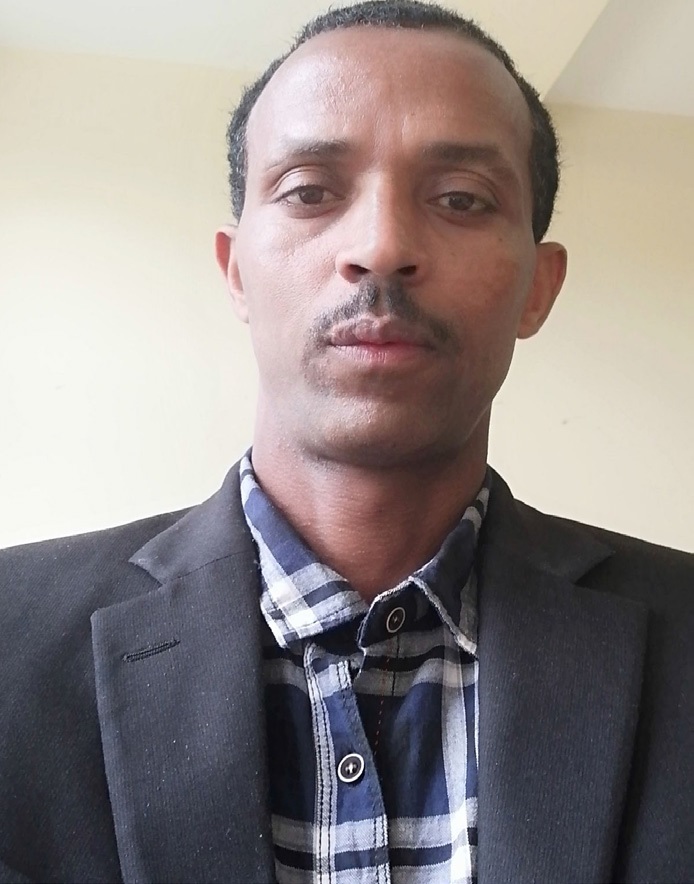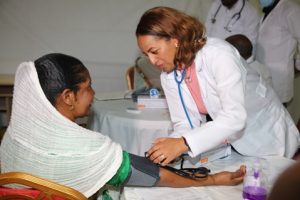
Data from various sources shows that Ethiopia has made significant strides in expanding coverage of key malaria interventions throughout the country, in partnership with various stakes.
The Ethiopian Herald approached National Malaria Control and Elimination Program Coordinator at Disease Prevention and Control Directorate of Federal Ministry of Health Mebrahtom Haile to learn more about World Malaria Day’, and the remarkable progress Ethiopia made in preventing and controlling Malaria as well as the challenges the country faces in combating the disease. Excerpts.
Ethiopian Herald: Please state how Ethiopia is doing in its fight against malaria?
Mebrahtom Haile: Historically, there have been around five million clinical malaria cases annually. Since 2006, however, the cases have reduced as a result to clear strategies that targets early diagnose and treatment, including health extension program as prominent platform at community level. More than 132 million long-lasting insecticide-treated nets have been distributed to all at risk population over the last 13 years. About five million unit structures (houses) in highly risk areas have been sprayed annually.
Drugs, diagnostic equipment and supplies have been in place annually in all affected areas. The total annual expenditure for malaria prevention control and elimination was estimated to be 3.5 billion Birr, where Global fund and PMI are main contributors. Moreover, scaling up and sustaining proven anti-malaria interventions have played a very important role in reducing malaria cases and deaths in the country.
Accordingly, the country malaria map has been shrinking from time to time. Between 2010 and 2015 alone, malaria cases have reduced by 50 percent whilst deaths due to malaria have been reduced by 60. Another study indicates that more than 80 per- cent reduction is achieved in malaria related deaths during the last 16 years. Additionally, the number of malaria cases has been reduced by at least 50 percent over the last seven years 2012-2018.
According to WHO’s world malaria report, Ethiopia has been found to be one of the few African countries which showed significant reduction in malaria incidence continuously. Motivated by the achievements made so far and noting the global momentum in the fight against malaria, Ethiopia now has developed and launched national malaria Elimination roadmap in 2017. Reducing malaria case incidence and malaria mortality rate to zero by 2030, and preventing re-establishment of malaria in all malaria-free districts are the three milestones of the malaria elimination road map in Ethiopia.
Ethiopian Herald: This year’s theme for the World Malaria day is ‘Zero malaria starts with me’. What is its implication?
Mebrahtom Haile :We believe this year’s theme is powerful enough to engage individuals and all members of the society including political leaders who control government policy decisions and budgets, private sector companies that will benefit from a malaria-free workforce, and communities affected by malaria, whose buy-in and ownership of malaria control interventions is key to success. It is in this sense that the theme has been flagged all over the world, including Ethiopia.
Ethiopian Herald: In Ethiopia, we know that Malaria morbidity and mortality have been significantly reduced since 2001. However, malaria case incidence is still high, and there were major gaps between Insecticide-Treated Nets (ITNs) ownership and compliance in malarious areas.
What should be done with regards to targeting high transmission area in various parts of Ethiopia to sustain the achievements?
Mebrahtom: Optimization of key intervention utilized by the affected community, such as ITNs utilization, house spray, larval source management, access to prompt diagnosis and treatment, is the utmost important thing to tackle the challenges and sustain the gains. Needless to say community engagements in all aspects of malaria control and elimination activities is crucial in this regard.
Ethiopian Herald: What are the challenges and opportunities in distributing bed nets in high transmission areas?
Mebrahtom: Every three years we distribute and replace more than 33 million Insecticide-Treated Nets (ITNs) to malaria affected areas presumed to protect 63-65 million populations from malaria infection. There needs to be efficient logistic system to distribute the nets in time. We have challenges related with delayance of LLINs replacement due to logistic and procurement issues. Plus, utilization of those nets is not also optimal, as there is a wide misuse of ITNs in the community. Use of existing community structure including health development army can support the ITNs distribution in Ethiopia.
Ethiopian Herald: How many woredas are undergoing malaria elimination?
Mebrahtom: The elimination strategy launched is a phase-based scheme, implemented in 239 districts in six regional states. To date, the malaria elimination activities mainly focus on appropriate targeting of interventions, improve quality of services and commodities, and utilization of anti-malaria intervention by at risk communities. The activities are going well, and the elimination endeavor is paying off in reducing cases dramatically in all targeted areas.
Also, we have strong partnership with all stake and partners in malaria control and elimination including the private sector. We have monthly Technical Advisor Committee (TAC) meeting to boost the partnership in addition to the routine platforms.
Ethiopian Herald: How is the nation monitoring and evaluating current malaria transmission status?
Mebrahtom: Malaria is a weekly reportable disease and the ministry of health is closely monitoring the situation of malaria all over the country by doing weekly analysis and supplemented by feedback to regions to heighten their surveillance and supervision. Moreover, quality and efficacious of major anti-malaria drugs, and supplies and interventions are evaluated on regular basis to monitor return of the investment in malaria in Ethiopia.
Ethiopian Herald: Moving ahead, what are the challenges the nation faces in fighting Malaria?
Mebrahtom: Sub-optimal uptake of anti malarial interventions by at risk population, Insecticide resistance (IRS) and Quality of IRS, Internal Displaced Peoples (IDPs) and migrant workers, malaria prevention efforts in development corridors, refugee influx, data availability, and quality and utilization are among the challenges we face moving ahead.
To conclude, I would like to say that malaria elimination requires collective efforts. Hence, Let us unite and accelerate our efforts to eliminate malaria from Ethiopia.
The Ethiopian Herald May 1/2011
BY MENGESTEB TESHOME




